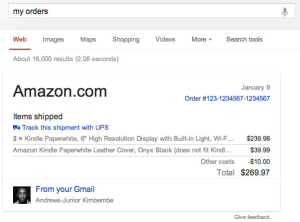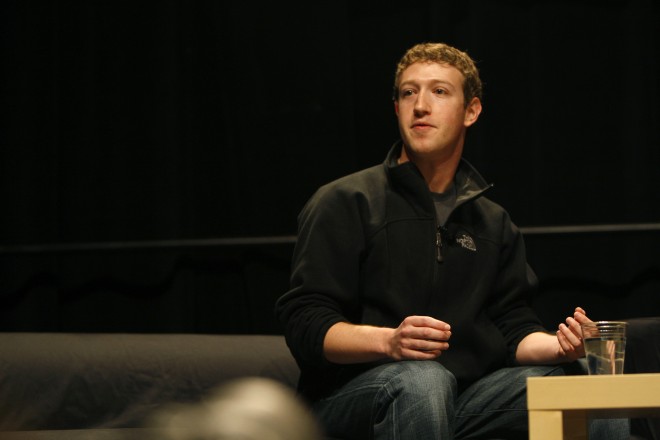Faced with a loud and angry backlash from some of its most active
users, photo-sharing app Instagram backtracked Tuesday on new language
that appeared to give the company ownership of their images.
"The language we proposed
... raised question about whether your photos can be part of an
advertisement," Instagram co-founder Kevin Systromwrote in a Blogpost. "We do not have plans for anything like this and because of that we're going to remove the language that raised the question."
An update Monday to Instgram's terms of services
had stated that data collected through the app can be shared with
Facebook. That's not a surprising move, considering Facebook paid an
estimated $1 billion for the photo-sharing service earlier this year.
But the language that upsets some app more than 100 million users
said that "a business or other entity may pay" Instagram for the use of
user images and may do so "without any compensation to you."
That didn't sit well with some -- including Facebook CEO Mark Zuckerberg's wedding photographer.
"Pro or not if a company wants to use your photos for advertising they need to TELL you and PAY you," Nha Kalina wrote today on Twitter.
Kalina stopped short of
vowing to quit Instagram, saying he hopes that language will be deleted.
The proposed changes are set to go into effect January 16.
Others weren't being so patient.
A popular Twitter feed associated with the hacker collective Anonymous was urging its more than 780,000 followers to dump the app Tuesday morning.
"Only way to opt out of
@instagram selling your photos is deleting your account," wrote the
person who runs the account. "Sounds good to us. #BoycottInstagram".
The feed posted image
after image of screen shots from followers who had done just that. It
claimed it was receiving thousands of such images -- too many to count.
Systrom wrote that the
intent of the new terms was "to communicate that we'd like to experiment
with innovative advertising that feels appropriate on Instagram."
"Instead it was
interpreted by many that we were going to sell your photos to others
without any compensation," he wrote. "This is not true and it is our
mistake that this language is confusing. To be clear: it is not our
intention to sell your photos. We are working on updated language in the
terms to make sure this is clear."
The new terms appeared
to significantly broaden what Instagram can do with users' content.
Currently they say, "Instagram may place such advertising and promotions
on the Instagram Services or on, about, or in conjunction with your
Content."
Systrom's post came
after a morning when social media and tech blogs lit up with complaints.
#BoycottInstagram and #Instagram were top trending topics on Twitter
for much of the day.
Wil Wheaton, who
parlayed a child-actor stint on "Star Trek: The Next Generation" into
becoming one of the Web's earliest star bloggers, wrote that he doesn't
use Instagram. But he questions whether other "celebrities to some
degree" could be exploited if they do.
"If someone Instagrams a
photo of Seth Green walking through an Urban Outfitters, does that mean
Urban Outfitters can take that image and use it to create an implied
endorsement by Seth?" Wheaton wrote. "What if the picture is taken by a
complete stranger? Who gets final say in how the image is used? The
subject, the photographer, or Instagram?"
Even CNN's own Anderson Cooper was expressing some concern on the site.
"#Instagram will now be
able to use anyone's photos in ads? Without consent?" he wrote on
Twitter. "Come on! Is there another photo app people recommend?"
Cooper wasn't the only one considering his options.
"I have my fingers
crossed that they, Instagram, will listen to the voice of the community
and reverse the new terms of service, but I'm not holding my breath,"
wrote photojournalist Richard Koci Hernandez, who has more than 163,000
Instagram followers. He shared his thoughts on Instagram, where he was posting blank black squares instead of his usual artful black-and-white images.
"I don't feel like
debating the terms of service or being too nostalgic about the old days
of Instagram, I feel that it's much better just to take our work and
more importantly friendship and conversation to another place that
respects our rights and ownership as creators," Hernandez added. "Let's
move the party to a new location."
Bloggers also were spotlighting tools like Hipstamatic and Camera Awesome, as well as Twitter's own new photo services that includes Instagram-like filters.
A year and half old Blogpost
from
photo-sharing site Flickr was also making the rounds. In it, Yahoo,
which owns Flickr, uses language, perhaps aimed at Facebook, that says
"(w)e feel very strongly that sharing online shouldn't mean giving up
rights to your photos."
Systrom said Instagram agrees.
"Instagram users own
their content and Instagram does not claim any ownership rights over
your photos," he wrote. "Nothing about this has changed. We respect that
there are creative artists and hobbyists alike that pour their heart
into creating beautiful photos, and we respect that your photos are your
photos. Period."
It is, of course, too
early to know how many people were fleeing Instagram on Tuesday. But
anecdotal evidence suggested a movement was afoot.
Instaport, a tool that
lets users export and and download their Instagram images, was reporting
overtaxed servers Tuesday morning.
"Our servers are very busy right now, so it may show you some errors," the company wrote to a user on its Twitter feed. "Please try again later or tomorrow."













































